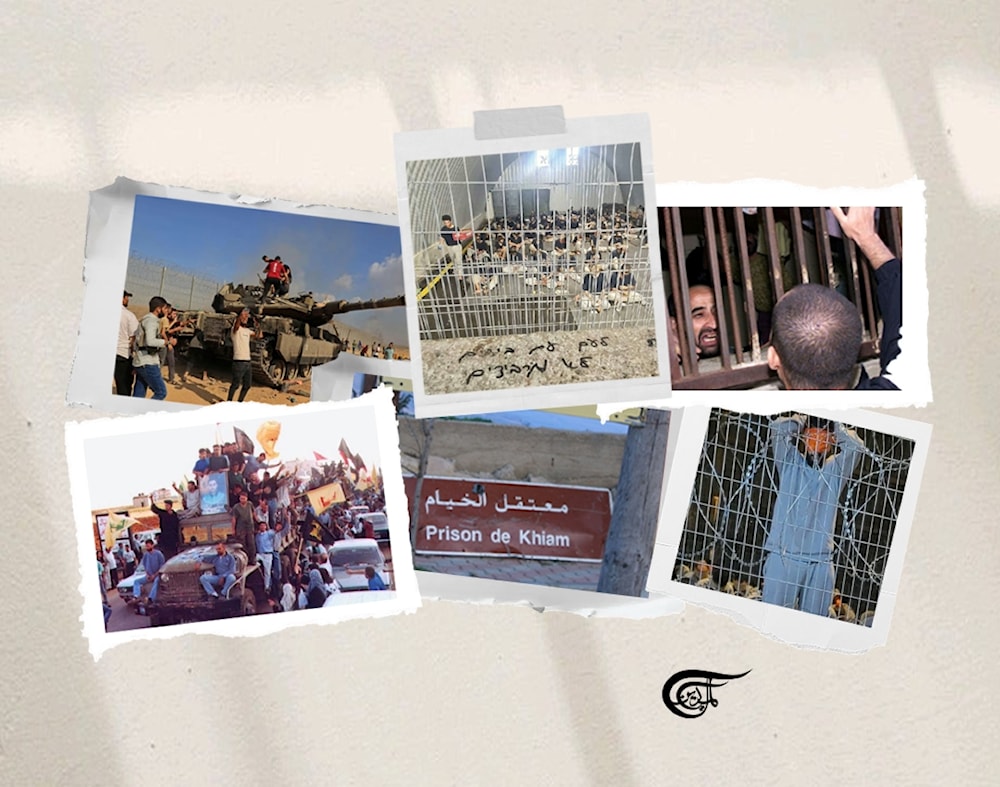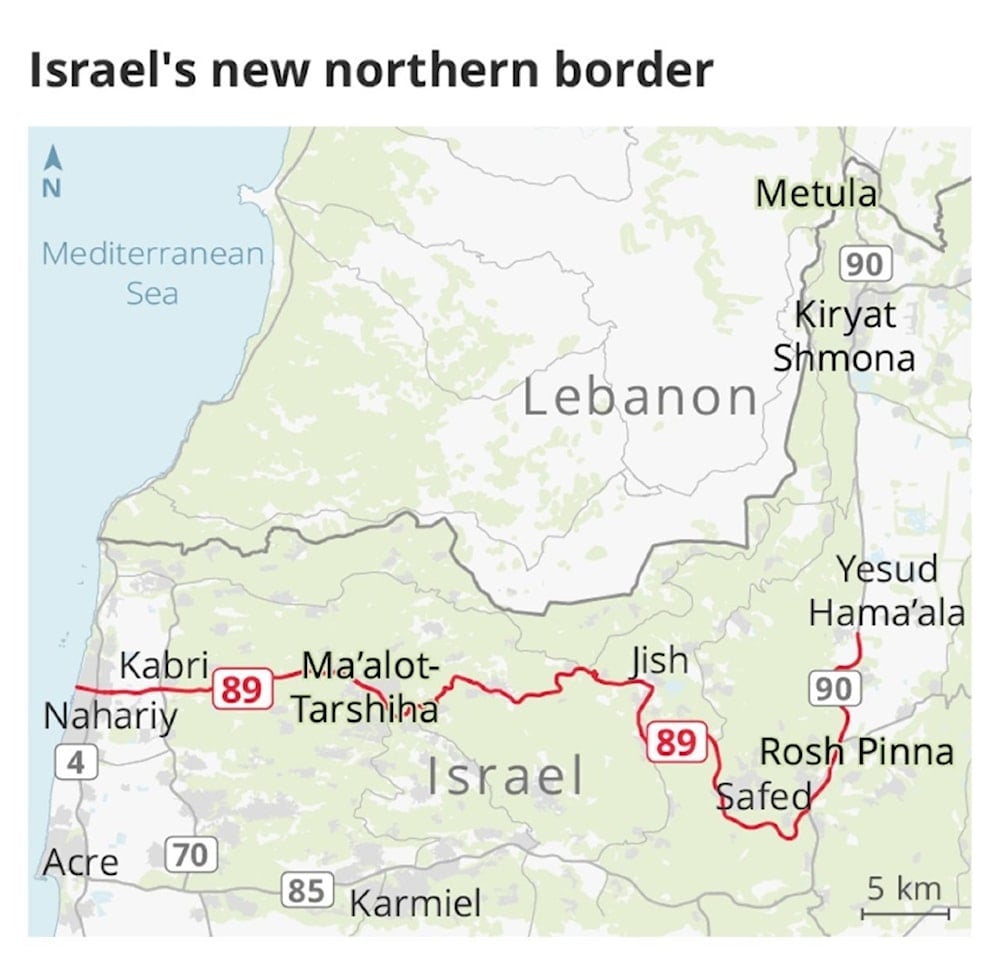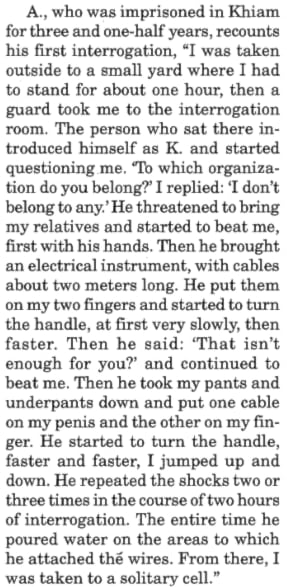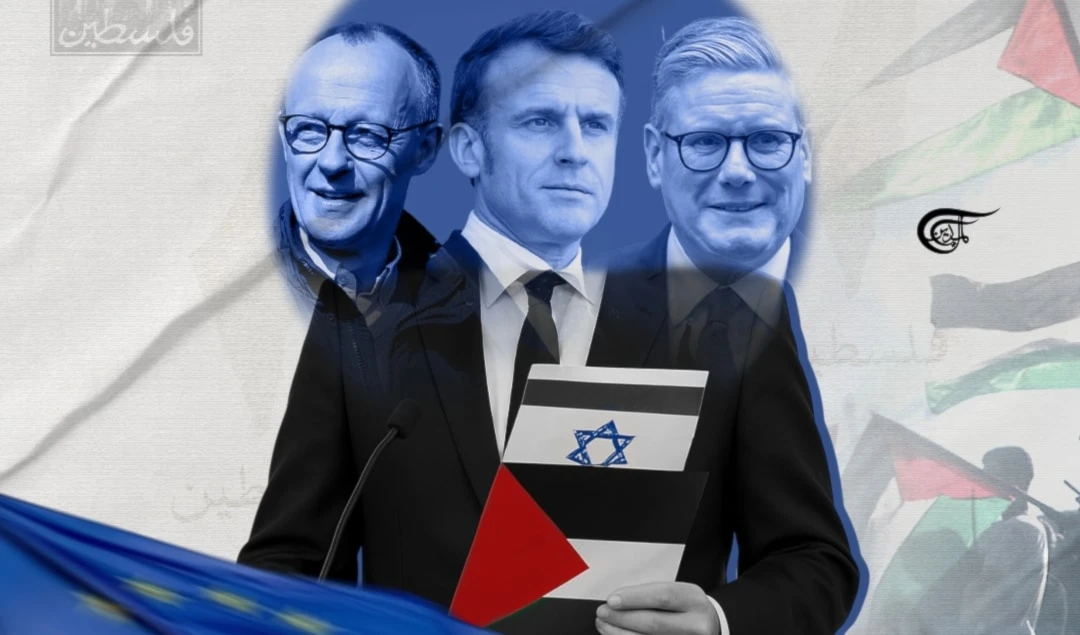Resistance and Liberation Day
In her powerful reflection, Julia Kassem draws a direct line from Lebanon’s 2000 liberation to Gaza’s Al-Aqsa Flood, arguing that both shattered normalization efforts and redefined the trajectory of regional resistance.
-

Such successive security incidents can be seen as ‘cracks in the facade’ of a very fragile Zionist entity, which, as Sayyed Nasrallah said in his victory speech "is weaker than a spider’s web." (Al Mayadeen English; Illustrated by Batoul Chamas)
Shortly after the Hezbollah-Zionist entity ceasefire, Secretary-General Sheikh Naim Qassem hailed Hezbollah’s victory as even greater than 2006’s, with the entity failing to enter Lebanon after 66 days of failed attempts at a ground invasion in spite of far greater challenges, unprecedented blows and difficulties faced by Hezbollah, and a relentless entity that had spent the better part of the last two decades and a half honing its treachery to unhinged levels.
25 years ago marked the first expulsion of the Zionist entity from Lebanese land after 18 years of occupation and continued resistance from an occupying force with the collective West’s resources at its disposal.
The Zionist entity was prepared to envelop South Lebanon within the scope of the territory it occupies. Since 1978, the Zionist entity’s goal has been to expand its occupation, extending its ‘buffer zone’ to Beirut in order to occupy the historical homes of resistance, South Lebanon as well as Palestine, and render the rest of Lebanon a comprador faction servicing US interests that sought to consolidate a pro-capitalist, US-friendly bloc in the vein of the 1953 Baghdad pact that would be a bulwark against the historical legacy of anti-colonial resistance and/or Arab socialism.
The following year, however, would turn the bipolar international order on which the US had been calculating, up on its head with the victory of the Islamic Revolution in Iran. Before physical borders could be redrawn, with the Lebanese Islamic Resistance first proving the ability and agency of an Arab and Muslim group to shape the region's physical destiny in 2000, Imam Khomeini had instilled the mental and spiritual will for organized and disciplined resistance, ideological and organizational self-reliance, and belief in one’s own people’s capabilities.
This is exactly what Sayyed Hassan Nasrallah referred to in one of his last speeches, taunting the entity for attempting to recreate the 1978 objectives in 2024. The irony, however, was that "Israel’s" settlers were leaving the north of occupied Palestine, the Lebanese Resistance was scorching the settlements, and the Zionist entity officials and media were lamenting over "‘Israel’s’ new northern border.’"
Sayyed Nasrallah was the continuation and historical elevation of the trajectory that began before him, actualized in our day and age through the Islamic Revolution, and first materialized in Lebanon when the tides of the occupation began turning 15 years prior to liberation, in 1985.
As Sheikh Naim Qassem explained in his first speech commemorating Resistance and Liberation Day as Secretary General, Resistance operations contributed to "Israel’s" first border withdrawal to 11% of Lebanon’s current territory.
The Resistance, which took root in the early 80s, thwarted Israeli attempts to materialize the May 17, 1983, agreement that stipulated normalization with the Zionist entity on the condition of partial withdrawal from Beirut, agreed upon under the US- and Israeli-allied Gemayel governments. There exists again a historical precedent for Al-Aqsa Flood as a historical element that shattered the trajectory of normalization between the Arab governments and "Israel": the launch of the Lebanese Islamic Resistance’s operations that destroyed imperialist prospects of bringing Lebanon past its borderline position of normalization with the entity. Today, it couldn’t be further from normalization despite the continued insistence on successive, but unsuccessful, US administrations in enforcing the "New Middle East" plan.
-

(From Haaretz in May 2024)
Yet this is the first Resistance and Liberation Day since history was made officially on May 25, 2000, to be honored and commemorated without its figurehead and the liberator – now martyr– responsible for its inception. It is unthinkable that Sayyed Nasrallah, martyred nearly 8 months ago to the date, would not be giving an anniversary speech as the leader who led Hezbollah as the first Arab resistance movement to reverse the trajectory of Israeli expansionism in the region.
The legacy left by May 2000 continues in the aftermath of the Al Aqsa Flood. On October 7, 2023, the Palestinian Resistance once again reminded the entity that the fate of the region’s borders was in its hands, not the entity’s. Just as Hezbollah continued to push "Israel’s" own undeclared boundaries, the Resistance in Gaza reminded the entity of the fragile grounds on which it constructs its occupation, which Hamas unearthed on October 7 as lands of their exiled forefathers just within reach.
May 25, 2000 massively shaped the events of October 7, 2023, and its aftermath. Borders had since been redrawn on land, and, thanks to the Ansar Allah, by sea. The first Resistance and Liberation Day set in motion the course for successive Israeli defeats, realized again in 2006 in both Lebanon and Gaza. In recent years, Palestinians have come to describe and sense the imminence and closeness of liberation, with Lebanon’s liberation serving as the precedent and node of shared struggle. Sayyed Hassan noted in 2000 the ease and quickness with which the Entity dropped and abandoned its agents and proxies in Lebanon, a fate that awaits the collaborators of the PA and "Israel’s" other associated agents in Palestine.
Two days before liberation, southerners broke the heavy iron doors of the tiny cells of the notorious Khiam prison in the southeasternmost border of Lebanon, freeing their loved ones held hostage in the former French army base turned into an Israeli prison managed by the entity's then-proxy, the South Lebanon Army (SLA).
In recollections reminiscent of "Israel’s" current torture and brutalization of occupied Palestinians in prisons, and as they are essentially chronically imprisoned in their own homelands, many of the torture scenes in prisons like Sde Teiman, that shocked and horrified the world, also have precedents in the Israeli torture of Lebanese Resistance fighters during its occupation – such as one case of an Amal fighter brutalized with a rod. Sleep deprivation, starvation, stuffing prisoners in chicken coops, breaking limbs, attaching cables to inflict electric shocks on prisoners were just a few widely reported cases.
At the time, it was considered "one of the most brutal torture centers in the region," with one Israeli official bragging about how it "made prisons in the occupied territories look like 5-star hotels."
Yet on May 23, 2000, after 15 years of Resistance from what started as a seemingly ragtag group, the prison was liberated, giving hope and vision to the eventual fate of Israeli torture dungeons in occupied Palestine. Over two years before the Al Aqsa Flood, six freedom fighters, among them the famous Zakariyah Zubeidi, escaped from the high-security Gilboa Prison, with just a spoon dug through a hole underneath the cell’s shower.
Such successive security incidents can be seen as ‘cracks in the facade’ of a very fragile Zionist entity, which, as Sayyed Nasrallah said in his victory speech, "is weaker than a spider’s web." A spider, when cornered, threatened, and in existential danger, emits venom, bites, and even kills. But it is undeniable that, in spite of the massive blows the Resistance has faced, sacrificing its best martyrs and facing its greatest challenges in the aftermath of Al-Aqsa Flood, that the fronts and fates of Lebanon and Palestine are linked in both history and in destiny, and the path to liberation, having cruised over the decades along the era of victories, is culminating into an eventual Liberation for Palestine.

 Julia Kassem
Julia Kassem
 7 Min Read
7 Min Read










